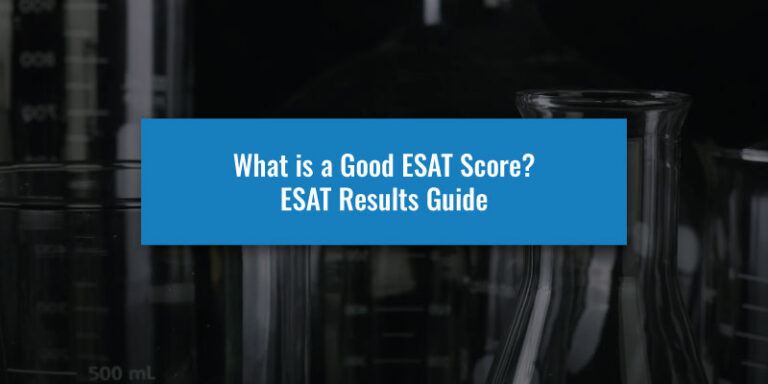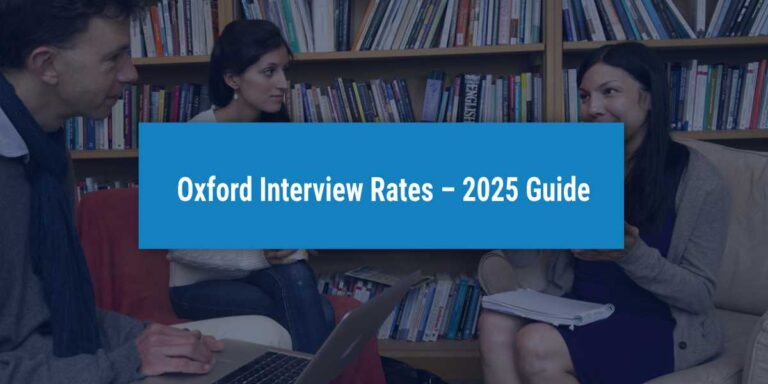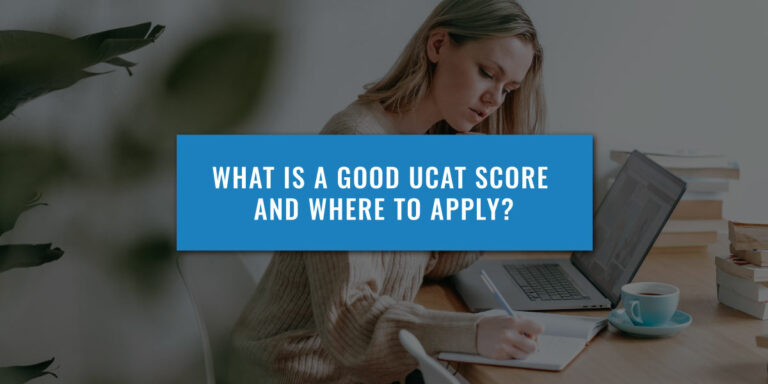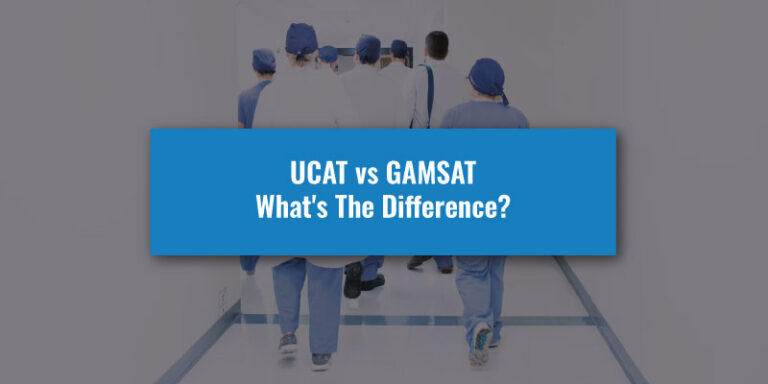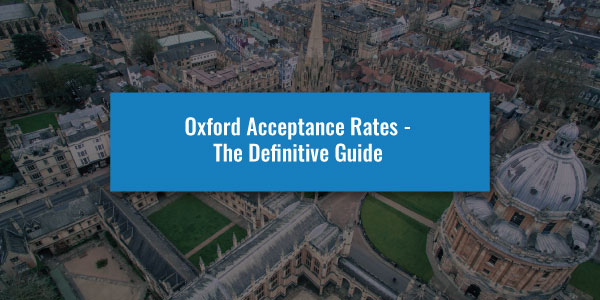On June 3rd 2024, the University of Oxford announced a brand-new partnership with the global test provider Pearson VUE. This new partnership means that all of Oxford’s internal admissions tests will now be delivered by Pearson VUE using its established network of testing centres.
This will be unlike previous years for Oxford admissions testing, which was either handled internally or outsourced to different companies. However, this move mirrors a similar decision from the University of Cambridge to partner with Pearson VUE for some of their admissions tests.
This has led to a situation where almost all Oxbridge admissions testing will now be handled by the computer-testing firm, so this guide will explore what exactly has happened, why it’s happening and how it could affect your application.
How Will You Be Affected? - Students
- Pearson VUE will now deliver All Oxford admissions tests using their established system.
- Pearson VUE specialises in computer-based online testing and operates test centres across the globe. Oxford admissions tests were previously done on paper.
- Tests will be sat between October 21st and October 31st. Booking runs from August to October.
- The PAT and MAT will see major format changes that place a greater emphasis on multiple-choice questions.
- Various new admissions tests have been created during this partnership, including tests for Biomedical Science and Ancient History & Classical Archaeology.
- The Oxford English Literature Admissions Test (ELAT) will not be run in 2024, no replacement has been announced yet. The Geography Admissions Test has also been cancelled.
How Will You Be Affected? - Schools
- All Oxford admissions tests will now be computer-based and taken at Pearson VUE testing centres. You will need to familiarise yourself with the processes and systems for this to better support your students.
- Tests must be booked from August 15th to October 4th to be sat between October 21st and October 31st.
- The PAT and MAT will have a greater emphasis on multiple-choice questions in future tests.
- Biomedical Science and Ancient History & Classical Archaeology will need to sit a brand new admissions test in 2024.
- English and Geography applicants will not be required to sit an admissions test in 2024.
- Current practice materials for returning admissions tests are still relevant, though these tests will no longer be paper-based.
Be prepared for you admissions test with UniAdmissions
At UniAdmissions, we’ve spent over 10 years preparing students for every major Oxbridge admissions test, as well as the other aspects of their application. We’ve developed a comprehensive curriculum that can support you through admissions tests both new and old!
Discover our Oxbridge Premium Programmes below and find out how you can enrol and triple your chances of success.
Oxford Partners With Pearson VUE - What Does This Mean?
The announcement that Oxford would be partnering with Pearson VUE for its admissions tests was made in early June and offered several important details regarding the 2024 admissions testing period. Let’s go over the key points from this announcement.
Who Is Pearson VUE?
Pearson VUE is an international company that specialises in developing and delivering computer-based tests across the globe. Pearson VUE runs various systems to deliver its tests, including a system for university admissions tests. Previously, this system was only used for two major admissions tests; the University Clinical Aptitude Test (UCAT) and Law National Aptitude Test (LNAT).
These are the primary admissions tests for Medicine and Law in the UK, with the former being used by over 30 medical schools and later being used by 10 law schools, including Oxford and Cambridge.
All Pearson VUE tests are delivered via their dedicated testing centres. There are hundreds of centres located around the world, including over 100 in the UK. These centres are open year-round and offer tests for a wide variety of industries.
Which Oxford Admissions Tests Are Pearson VUE Running?
The announcement made by the University of Oxford offers a list of tests that Pearson VUE will now be delivering in 2024, which is comprised of all their major tests:
- Ancient History & Classical Archaeology Admissions Test (AHCAAT)
- Biomedical Sciences Admissions Test (BMSAT)
- Classics Admissions Test (CAT)
- History Admissions Test (HAT)
- Mathematics Admissions Test (MAT)
- Modern Languages Admissions Test (MLAT)
- Philosophy Test (PHILAT)
- Physics Admissions Test (PAT)
- Thinking Skills Assessment (TSA)
Not included in this list are the LNAT and UCAT, both of which are run by Pearson VUE. Oxford has been utilising the LNAT for several years, so there will be no changes to this process. Oxford has previously announced that it will adopt the UCAT for its medicine degree following the removal of the Biomedical Admissions Test (BMAT) in 2023. The UCAT is now the only undergraduate admissions test for medicine in the UK.
How Are Oxford Admissions Tests Changing?
Some Oxford admissions tests will be seeing format changes in the wake of this new partnership. The obvious change for all of these tests is that they will now all be computer-based and run on Pearson VUE’s system. However, some tests have been more impacted than others, including two tests seeing major overhauls.
Firstly, the Physics Admissions Test (PAT) has seen the biggest change out of all the admission tests. The PAT previously featured three different question types; Multiple-Choice, Written and Multi-Part. The latter two required applicants to write their solutions in full, including a demonstration of their methodology, to earn full marks.
However, with the move to computer testing and the restrictions that it brings, the PAT will now be comprised entirely of multiple-choice questions. Theoretically, this should make the test easier, although it’s important to note that the test syllabus will not be changed.
The Mathematics Admissions Test (MAT) has seen a similar change too. The MAT used to have a similar structure to the PAT, though it only featured 10 multiple-choice questions and 5 longer written questions.
In the new format, the test will not feature 27 questions in total. 25 of these will be multiple-choice questions and the final two will require written responses (though applicants will not need to type complex mathematical notation). Due to the limitations of the format, these questions likely won’t be as complicated as in previous papers. Once again, the syllabus will not be changed from the previous year.
Are There Any New Oxford Admissions Tests In 2024?
Although we’ve known about these tests for some time, this announcement reconfirmed the existence of two new Oxford admissions tests for 2024; the Biomedical Science Admissions Test (BMSAT) and the Ancient History & Classical Archaeology Admissions Test (AHCAAT). Full details on these tests have yet to be announced, but we now know that these will be delivered (and were likely developed) by Pearson VUE.
Have Any Oxford Admissions Tests Been Removed?
Two Oxford admissions tests have been removed for the 2024 admissions cycle; the English Literature Admissions Test (ELAT) and Geography Admissions Test (GAT). The ELAT has consistently been run for many years at Oxford, although the GAT was only reintroduced in 2023 after having been replaced with the TSA several years earlier.
Applicants for the following subjects will be affected by this change:
Combined courses with English and another subject will also be affected, but applicants will still need to sit an admissions test if the second course requires one for History, CAT for Classics and MLAT for Modern Language).
No replacements seem to be planned for either admissions test in 2024. However, the Faculty of English offered a press release explaining the ELAT’s removal in which the following is stated:
“…we are currently undertaking a process to consider how we can run the Oxford ELAT in future in a way that gives all candidates the best opportunity to demonstrate the critical skills and thinking we are looking for.”
It’s also stated that once this process is completed, the ELAT will be reintroduced to the admissions process. No timeline for this has been given. For 2024, written work will still need to be submitted.
When Will These Admissions Tests Be Held?
While not all details regarding the registration and testing process have been announced yet, Oxford has offered the key dates for these tests:
Oxford Admissions Test Registration Dates
August 15th – October 4th 2024
Oxford Admissions Test Testing Dates
October 21st – October 31st 2024
For 2024 applicants looking to secure entry in 2025, each Oxford admissions test will have a specific date that the test must be sat. These dates all occur between 21st and 31st October 2024.
The UCAT and LNAT do not have a single set testing date or time.
This differs from Oxford’s previous approach to testing, which would only offer one testing date for each exam that would be sat at a set time. This was done to prevent cheating between applicants by offering information about the paper to later test-takers in advance. However, Pearson VUE tests tend to offer randomised questions from a bank, meaning no two tests will be the same.
How To Register For Oxford Admissions Tests
In order to register for these admissions tests, applicants will be required to register via the Pearson VUE online registration system between 15th August and 4th October 2024. Typically, applicants sitting a Pearson VUE test will need to do the following:
- Create a Pearson VUE account via the online portal, which will require you to provide some personal and contact information.
- Once your account is confirmed, you will be able to book your test when bookings open. You will need to first select the exam you want to take and find your nearest testing centre.
- You will then need to confirm a time to take the test based on availability at the testing centre.
- There will be no charge to sit the Oxford specific admissions tests.
- You’ll be emailed your booking confirmation once you complete the booking process.
How Much Do Oxford Admissions Tests Cost?
Some Pearson VUE admissions tests require a fee, including the UCAT and LNAT. However, Oxford has confirmed that none of their own admissions tests run under Pearson VUE will require a fee, meaning you can sit these tests for free. Oxford previously did not charge for testing when operated internally, so no changes have been made in this regard.
That covers the key information we currently know about this partnership. Be aware that specific information for each admissions test, including their format and how they will be scored, is currently unavailable, so we will update this guide once we have more details. This includes updated preparation materials and specifications for these tests to match the new computer-based format.
For now, though, let’s explore the reasoning behind these changes…

Why Is Oxford Partnering With Pearson VUE?
Although not entirely expected, this new partnership has been suspected for some amount of time due to multiple factors affecting Oxford and Oxbridge admissions testing as a whole. Let’s take a look at the timeline of events that have led to both Oxford and Cambridge revamping their admissions testing system:
Cambridge Assessments Admissions Testing Announces Closure
The first events to shake up the Oxbridge admissions testing system occurred all the way back in November 2022, when Cambridge Assessments Admissions Testing (CAAT) announced it would be ceasing the operations of all Oxbridge admissions tests under its control after the 2023 testing period.
CAAT was responsible for a number of high-profile tests with Oxford and Cambridge, including the aforementioned BMAT and Thinking Skills Assessment (TSA), as well as Cambridge exclusive admissions tests like the Natural Science Admissions Test (NSAA) and Test of Mathematics for University Admissions (TMUA). This announcement had a bigger impact on Cambridge than Oxford – who mostly ran their test in-house at this point – but some tests would still be affected by the move.
Oxford Announces Partnership with Tata Consultancy Services
A few months later, in April 2023, Oxford announced that all of its admissions tests for 2023 would be delivered by Tata Consultancy Services (TCS) for the 2023 testing period (excluding the BMAT and TSA, which were still run by CAAT, and the LNAT).
The range of tests available was broadly the same as in previous years (the GAT was reintroduced for Geography applicants), but most tests would now be taken on computers. The Mathematics Admissions Test (MAT) and Physics Admissions Test (PAT), which featured longer-form mathematical and scientific questions, were delivered as a hybrid of computer and paper-based testing.
The registration and administrative processes were still being partly handled by Oxford, but TCS would be responsible for the bulk of Oxford’s admissions testing this year.
Oxford Admissions Tests Face Technical Issues
During the 2023 admissions testing period in October, applicants at Oxford faced many severe technical difficulties when trying to sit the admissions tests operated by TCS. This issue was widely reported on, with the MAT and ELAT being the worst affected. Oxford’s Faculty of Mathematics offered applicants a second, shortened version of the MAT for those affected, while ELAT results were disregarded altogether.
Shortly after, Oxford’s partnership with TCS was ended and information regarding admissions tests was removed from its website and replaced with a “TBC” message.
Cambridge Announces Partnership With Pearson VUE
In January of 2024, Cambridge announced their decision to partner with Pearson VUE to deliver all of their major admissions tests. Within this announcement, we learnt multiple things:
- The Engineering & Science Admissions Test (ESAT) would be introduced as a replacement for the Natural Science Admissions Test (NSAA) and Engineering Admissions Test (ENGAA).
- Pearson VUE would be taking over delivery of the TMUA, now as a computer-based exam.
- Cambridge would adopt the UCAT as a replacement for the BMAT.
While this was a fairly big change, it also wasn’t going to impact applicants too much as the exams were either very similar to or the same as previous exams (the ESAT exam format was heavily based on the NSAA). The exception to this was the UCAT, but almost all medicine applicants complete this test anyway as it was required by most medical schools before 2023.
Oxford Announces Move to UCAT
After speculation about what Oxford would replace the BMAT with, it was finally announced in February 2024 that it too would switch to the UCAT. This move was somewhat unexpected for both Oxford and Cambridge, as both universities highly value scientific knowledge and ability in applicants – something the UCAT doesn’t test.
That then brings us to Oxford’s announcement of their partnership with Pearson VUE, which should be the last major change within the Oxbridge Admissions Testing space for some time.
As we can see, the cause of this change was mostly down to the disastrous testing period Oxford saw in 2023 combined with potential collaboration with Cambridge to both work with Pearson VUE for admissions testing. Since Pearson VUE has a proven track record of providing major university admissions tests across the globe, the partnership is only natural, even if it means a change in format for some tests.
Access "The Big Book Of Oxbridge Applications" For FREE
Are you considering applying to Oxford or Cambridge? The Big Book of Oxbridge Applications is your must-have resource. Whether you’re exploring colleges, preparing for admissions tests, mastering your UCAS application, crafting a standout Personal Statement, or aiming for exam success, this free book will be invaluable to your preparation. You’ll find:
- Over 40 admissions test practice questions
- 28 example Oxbridge Personal Statements
- Interviews with Oxbridge students and graduates
- Additional downloadable resources
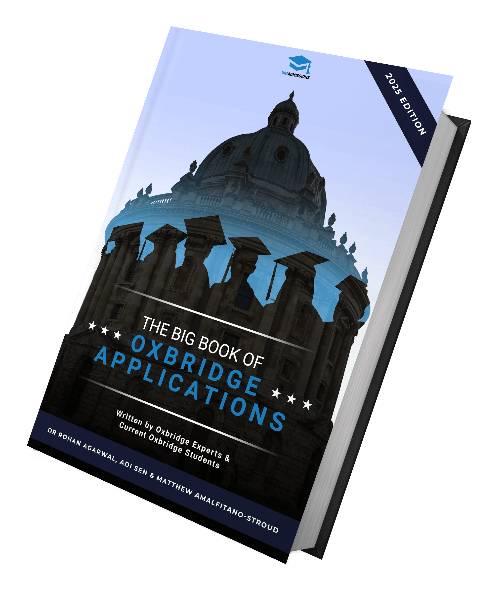
Oxford vs Cambridge - Admissions Tests
While both universities now use Pearson VUE to manage their admissions tests, there are a few key differences between how the two universities approach the system. Let’s take a look at some of the ways that admissions tests will be different at Oxford and Cambridge.
Testing Dates
Firstly, the testing periods for each university’s exclusive exams (not including the UCAT or LNAT) are being held on different dates. While they both take place in October, there won’t be any overlap between the two:
Oxford Admissions Test Dates
October 21st – October 31st
Cambridge Admissions Test Dates
October 15th – October 17th
Please note that each Oxford admissions test will have a specific date in which you must sit the test. The first test (HAT) will be sat on the 21st October 2024, with the final test (MAT) taking place on 31st October 2024. All other Oxford admissions tests will fall on a date in between these two. You can see full details of which tests must be sat when on the official Oxford page.
Exam Usage
While Oxford’s admissions tests will remain exclusive to that university, some of Cambridge’s tests, including the ESAT and TMUA, will also be required at other universities. So far, Imperial College London has announced the use of both tests and some other universities will accept the TMUA for certain courses to support applications (though it won’t be essential). It seems likely that other universities will also adopt these tests in the future.
It’s also important to note that the ESAT and TMUA have an additional testing period in January, though Cambridge applicants cannot sit their test on this date.
College Admissions Tests
Oxford has confirmed that all of its current admissions testing will be handled by Pearson VUE. However, Cambridge will still be maintaining many of its own admissions tests in-house. Admissions tests for many courses – including History, Classics and more – require admissions tests to be taken directly before an applicant’s interview. These are delivered by the college that an applicant attends rather than the university as a whole, and this process won’t change in 2024.
Overall, there’s nothing here that should have too much of an effect on your application (no one can apply for Oxford and Cambridge in the same year anyway), but it’s still good to be aware of how each university handles its admissions tests. if you want to compare Oxford and Cambridge further, be sure to check out our definitive Oxford vs Cambridge Guide.
How Does This Affect My Oxford Application?
Now you know what’s happening, but is this going to have a major impact on your application? While we can’t give a definitive answer until all of the details for each test are announced, the answer will depend on your course. In some cases, the changes should be minimal but others may end up sitting a test quite different from those in previous years.
For example, English and Geography applicants will now no longer need to prepare for an admissions test and will instead need to ensure they have submitted a high-quality piece of written work. Biomedical Science and Ancient History & Classical Archaeology applicants will need to prepare for a brand-new test that has not been run before, so preparation materials will be limited.
Meanwhile, due to the switch to computer-based testing, tests like the MAT and PAT may also see major changes to their format and question styles. Many admissions tests run by Pearson VUE are exclusively multiple-choice, but the aforementioned tests rely heavily on longer-written questions. In 2023, these tests were presented as hybrid tests, but it’s currently unknown if Pearson VUE will have the capacity to achieve this or if the tests will be changed into multiple-choice quizzes.
However these exams end up looking, it’s still important that you begin preparing as soon as possible with the resources available. Most of these tests have extensive collections of past papers to work through, as well as third-party question banks that utilise an online testing system.
Practising these questions online will be extremely important now that all of the tests are computer-based. Oxford has confirmed that practice tests will be released in the near future, but there are multiple options to explore if you want to get started before then.
That’s everything we currently know about this new partnership, but be sure to regularly check UniAdmissions for up-to-date information about everything in the Oxbridge application. We have a large library of free guides covering everything you need to know about the process, but we also offer comprehensive support for the application process of courses at Oxford or Cambridge. If you’d like to learn more about our Oxbridge Programmes, visit our programmes page to find your course and discover how we can triple your chances of success!
No matter what changes, we can help you secure your place at Oxford
Oxbridge admissions tests go through major changes roughly every five years. We’ve already experienced it once and have gotten over 50% of our students into Oxbridge each time! What we do works, so enrolling with us will give you the highest chance of success.
Discover our Oxbridge Premium Programmes below and find out how you can enrol and triple your chances of success.
